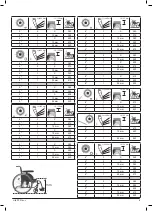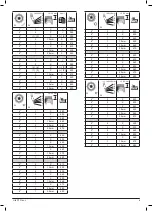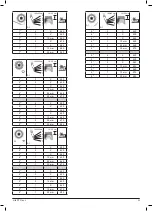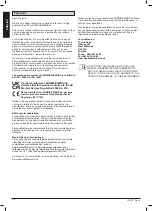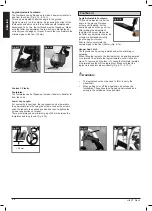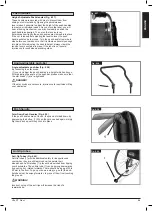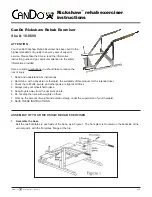
ENGLISH
19
Life RT Rev.J
3.0 Transportability
DANGER!
There is a risk of serious injury or death if this advice is ignored!
Transportation of your wheelchair within a vehicle:
A wheelchair secured in a vehicle will not provide the equivalent
level of safety and security as a vehicle seating system. It is
always recommended that the user transfers to the vehicle
seating. It is recognised that this is not always practical for the
user to be transferred and in these circumstances, where the
user must be transported whilst in the wheelchair, the following
advice must be followed:
1. Confirm that the vehicle is suitably equipped to transport a
passenger in a wheelchair, and ensure the method of access/
egress is suitable for your wheelchair type. The vehicle should
have the floor strength to take the combined weight of the user,
the wheel chair and accessories.
2. Sufficient space should be available around the wheelchair to
enable clear access to attach, tighten and release the
wheelchair and occupant tie down restraints and safety belts.
3. The occupied wheelchair must be located in a forward facing
position and secured by the wheelchair tie down and occupant
restraint straps (WTORS tie downs meeting the requirements of
ISO 10542 Part 2 or SAE J2249) in accordance with the
WTORS manufacturer’s instructions.
4. The wheelchair’s use in other positions within a vehicle has
not been tested e.g. transportation in a side facing position must
not be carried out under any circumstances (Fig. A).
5. The wheelchair should be secured by a Tie Down Restraint
system, conforming to ISO 10542 or SAE J2249 with non-
adjustable front straps and adjustable rear straps, which
typically use Karabiner clips/S hooks and tongue and buckle
fittings. These restraints generally comprise of 4 individual
straps that are attached to each corner of the wheelchair.
6. The tie-down restraints should be fitted to the main frame of
the wheelchair as indicated in the diagram on the following
page, and not to any attachments or accessories, e.g. not
around the spokes of wheels, brakes or footrests.
7. The tie–down restraints should be attached as close as
possible at an angle of 45 degrees and tightened securely in
accordance with the manufacturer’s instructions.
8. Alterations or substitutions must not be made to the
wheelchair tie down points or to structural and frame or
components without consulting the manufacturer. Failure to do
so will invalidate the ability of a Sunrise Medical wheelchair to
be transported within a vehicle.
9. Both pelvic and upper torso restraint belts must be used to
restrain the occupant to reduce the possibility of head and
chest impacts with the vehicle components and serious risk of
injury to the user and other vehicle occupants. (Fig. B) The
upper torso restraint belt should be mounted to the vehicle “B”
pillar - failure to do so will increase the risk of serious
abdominal injuries to the user.
10. A head restraint suitable for transportation (see label on
headrest) must be fitted and suitably positioned at all times
during transportation.
11. Postural supports (lap straps, lap belts) should not be used
or relied on for occupant restraint in a moving vehicle unless
they are labelled as meeting the requirements specified in ISO
7176-19 or SAE J2249.
Fig.A
Fig.B
PELVIC
RESTRAINT
BELT
UPPER
TORSO
RESTRAINT
BELT

